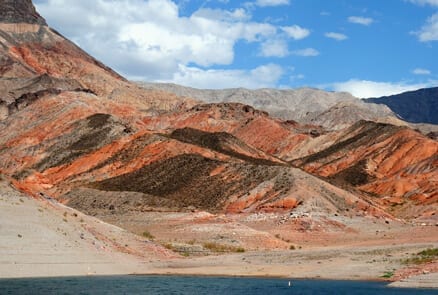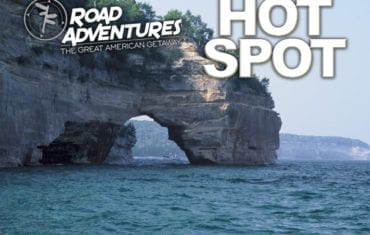Completed in 1935, Hoover Dam was constructed to provide much-needed hydroelectric power and water for the rapidly growing Southwestern United States. Straddling the Arizona-Nevada border, the massive structure dammed the Colorado River creating Lake Mead – the largest reservoir in the United States.
In addition to being an important source of water, Lake Mead National Recreation Area draws nearly seven million visitors annually. While still a popular destination for outdoor enthusiasts, drought conditions persisting for more than 15 years have reduced the Lake’s water level to historic lows.
The receding shoreline has revealed a treasure trove of history once hidden by millions of gallons of water.
One of those treasures is the remains of the town of St. Thomas. Settled by Mormon pioneers in 1865, St. Thomas was a bustling community along the Arrowhead Trail and an important stop between Los Angeles and Salt Lake City. With the completion of Hoover Dam, water from the Colorado River began to fill Lake Mead. As the water level rose, it entombed the abandoned townsite beneath more than 60 feet of water, submerging the last home in 1938.
In 2003, the water level of Lake Mead had dropped enough that concrete foundations could be seen below the water. Today, the entire community is once again fully exposed. Park visitors can wander through the ghostly remains, noting tree stumps, concrete foundations and other signs of civilization.
The re-appearance of St. Thomas is not permanent. When the drought eases and water levels climb, the community will once again sink out of sight beneath a deep, watery mantle.
Explore a World War II B-29 Superfortress Bomber – resting on the floor of Lake Mead
On July 21, 1948, a B-29 bomber was conducting high-altitude atmospheric research when it suddenly crashed into Lake Mead. All five crew members survived, but the aircraft sank 260 feet to the bottom. The depth of the wreckage precluded scuba divers from reaching the plane’s final resting place.
By 2003, the water level had receded significantly and recreational divers spotted the wreckage. Today, the bomber is covered by less than 130 feet of water – a depth accessible by divers. In order to protect the artifact, however, the Lake Mead NRA requires that all B29 divers must take part in a guided dive through Scuba Training and Technology, the only dive company approved by the Park Service.
To explore a the submerged, WWII B-29 bomber is a once-in-a-lifetime opportunity. And just like the community of St. Thomas, when the water levels rise the bomber will fade to the depths, inaccessible once again.
(Photo Credit: Iris Donovan/Flickr)









